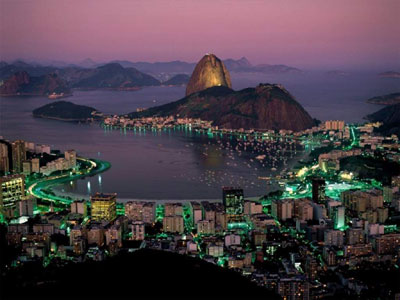
Sugar Loaf - Rio de Janeiro
The history of sugar loaf goes back to a geology created over 600 millions years ago, under high temperatures and pressure to its current majestic form. The sugarloaf has always been surrounded with tropical vegetation which today is remnants of the Atlantic rainforest found still in Rio de Janeiro.
According to the historian, Vieira Fazenda, the name Pão de Açucar or Sogarloaf in English, was appointed the mountain by the potuguese during the extraction of brazilian sugar canes in century XVI and XVII. After the sugar canes was boiled and refined, the sugar blocks were placed in mud containers of a conical form called sugarloaves for transport to Europe. The shape of the containers bore a strong resemblance with today’s sugarloaf, making it easy to assume the history of sugar loaf name.
The Sugarloaf is a landmark of Rio de Janerio in many ways:
It’s a natural landmark, because the peak of Pão de Açucar is in the entrance of the Bay of Guanabara, being a visual reference for navigators of the sea or air as it’s located in the periphery of the city.
The sugarloaf is a historical landmark, because to its feet, Estácio de Sá (Name of a person, and also today, name of a university in Rio), on 1º of March of 1565, established the City of São Sebastião of Rio de Janeiro. Estácio de Sá arrived at Rio de Janeiro on the 28th of February 1565 and on the 1st day of March he launched the beddings of the city, between the mountains of Cara de Cão and Pão de Açúcar as it was the best defendable location. The mountain allowed for observation of all movements in and out by boats, as well as providing view islands thereby protecting against all possible invaders.
In the history of sugar loaf, it’s last but not least also a tourist landmark, because the inauguration of the ferry cable of the Bread of Sugar in 1912, projected the name of Brazil in the exterior. The ferry cable of the Bread of Sugar was the first one installed in Brazil and the third in the world, rocketing development of the national tourism. It is not for nothing that the sugarloaf is called the ‘Tourist Jewel of the Wonderful City’ Rio de Janeiro.